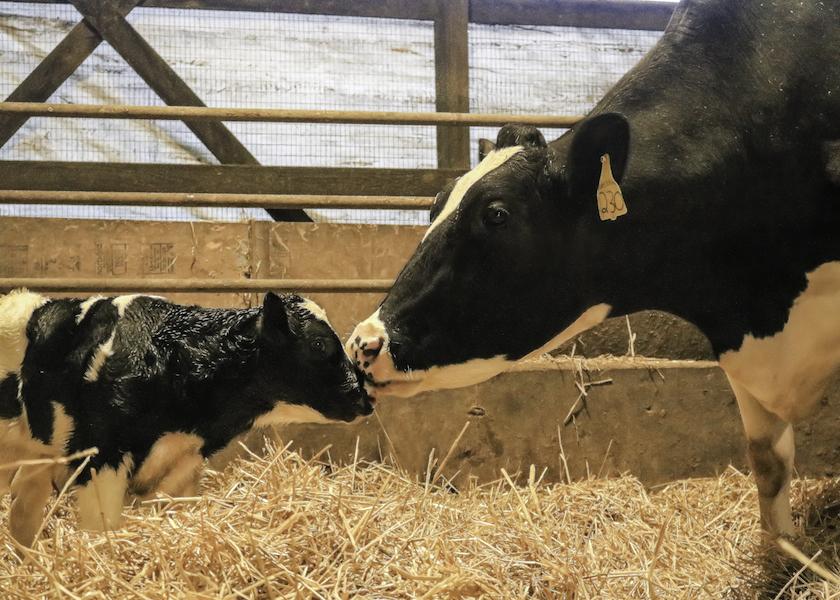3 Ways to Meet the Energy Needs of Young Calves in Winter

Preweaned calves in the first three weeks of life receive essentially all of their nutrients in liquid form. They also are the dairy animals most susceptible to cold stress because of their high surface-area-to-body-mass ratio.
When the mercury drops, those calves expend more energy to maintain their body temperature. That draws nutrients away from immune function and growth. So it’s up to us to support those winter babies with added nutrients to keep them healthy and growing through frigid conditions.
University of Illinois dairy researchers Sarah Morrison and Phil Cardoso addressed winter calf feeding in an issue of the Dairy Focus at Illinois newsletter. They noted a rule of thumb for energy needs of young calves is that for every 1˚F decrease in ambient temperature below 50˚F, a 1% increase in energy is required. Suggested ways to accomplish this are:
1. Feed higher amounts of milk or milk replacer – Adding a third daily feeding may be required to accomplish this
2. Change liquid ration formulation – Increasing the nutrient density (up to no more than 16% solids) can pack more energy into every bottle or pail. Many milk replacer companies sell “winter blend” products that accomplish this, or a herd nutritionist can advise how to safely adjust the liquid-to-powder ratio. If feeding pasteurized whole milk, balancer powders can be added to achieve the same goal.
3. Increase starter-grain intake – This strategy will not work for the youngest calves under three weeks of age, but research has shown that older calves can compensate for higher nutrition demands in cold conditions by eating more starter. It is imperative that calves have access to fresh water to effectively employ this strategy.
Ohio State University Professor and Extension Dairy Specialist Maurice Eastridge noted in a DairExnet Bulletin that a combination of these strategies also can be used. He said the ultimate nutrition target should be small-breed calves three weeks of age or less consuming 1.3 pounds of dry matter (DM) per day, and large-breed calves consuming 2.0 pounds DM daily. [Milk replacer is approximately 95% DM and whole milk is 13% DM.]. Fat targets should be 0.3 pounds of daily fat for small breeds, and 0.5 pounds for large-breed calves.
Both the Illinois and Michigan State researchers noted important housing measures that can help calves maintain body heat and preserve nutrients. “Bedding for young calves is very important, because they lie down more than 18 hours a day,” said Cardoso. Deep, dry straw is considered the gold standard for calf bedding, as it allows the animals to “nest” and create stable air pockets free from draft. Wet bedding should be strenuously avoided, as it will produce 60% greater heat loss than dry bedding.
Eastridge advised positioning calf hutches to ensure the prevailing wind is not blowing into the front of the hutch. A windbreak upwind of hutches will protect the area and reduce wind chill on calves. Clean, dry calf jackets also can help preserve body heat in the youngest animals.
Overall, Eastridge said supporting preweaned calves in winter comes down to two basic elements: “Make sure calves have adequate nutrition to support their maintenance needs and still be able to grow; and make sure their housing conditions are not increasing their maintenance needs with drafts and wet bedding.”







